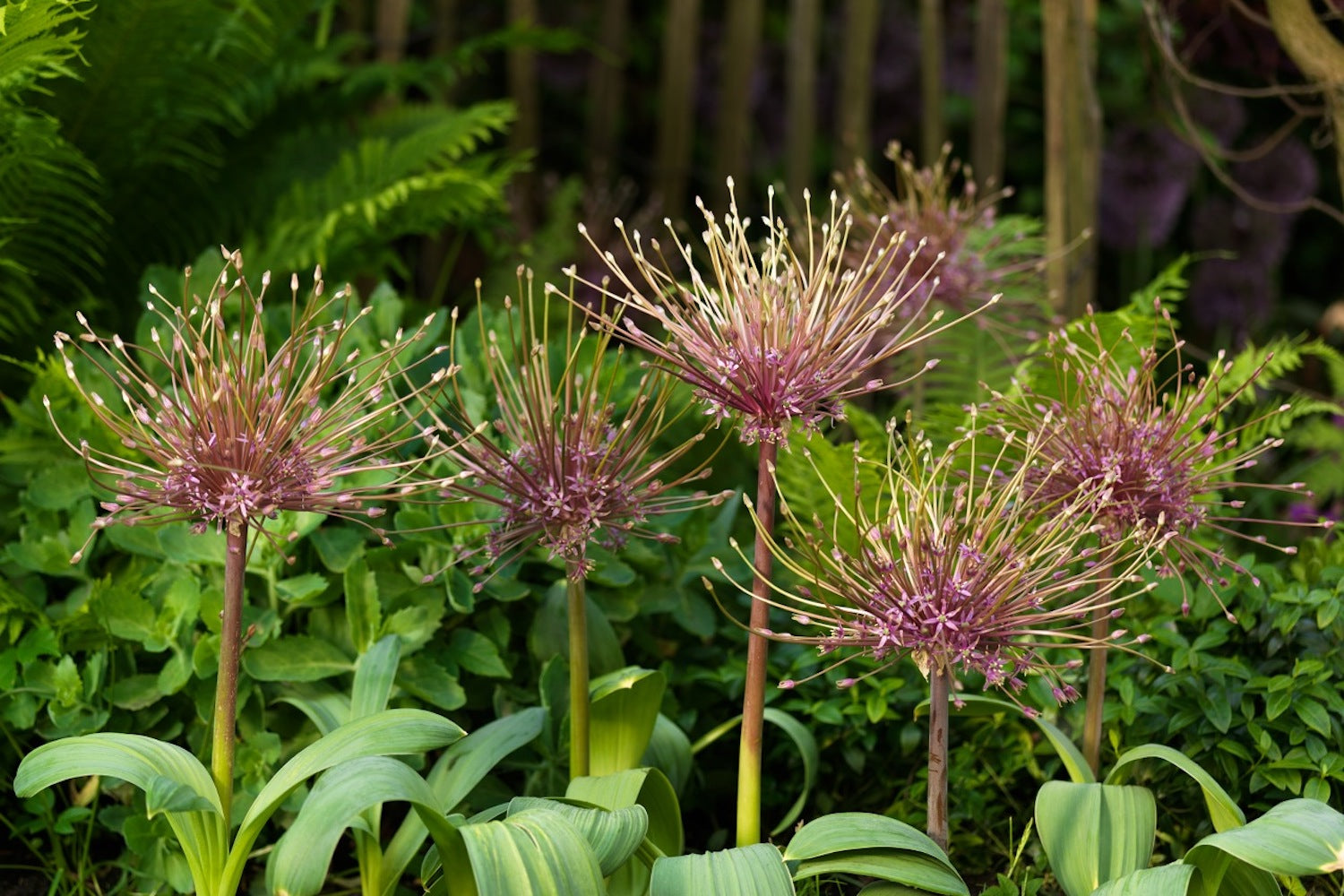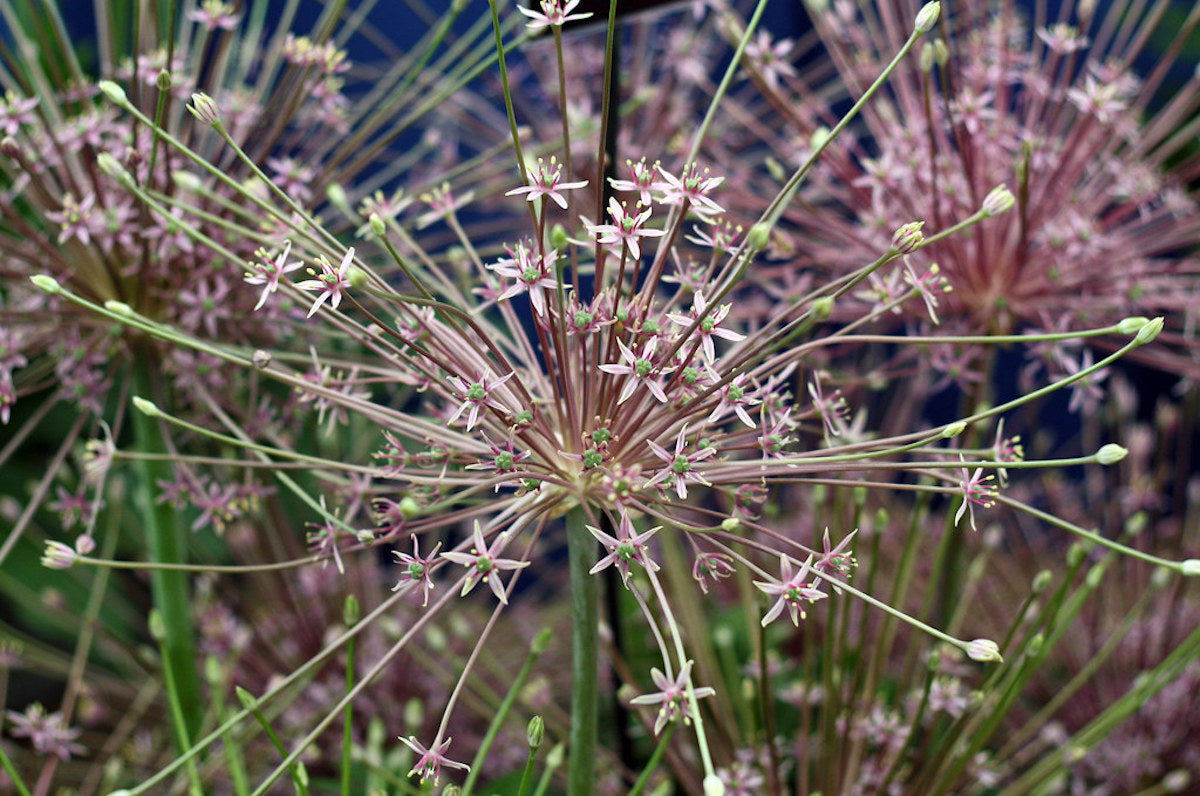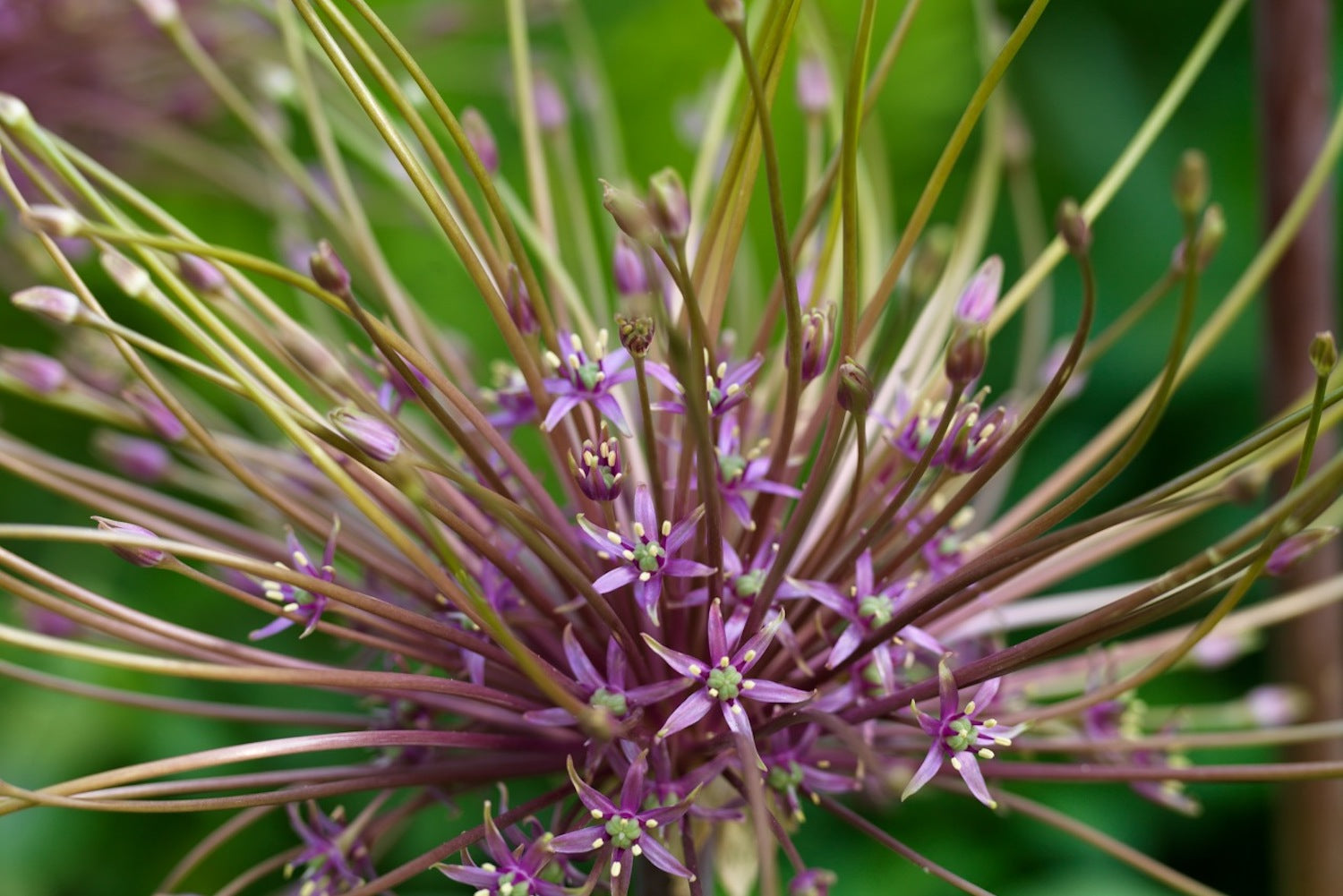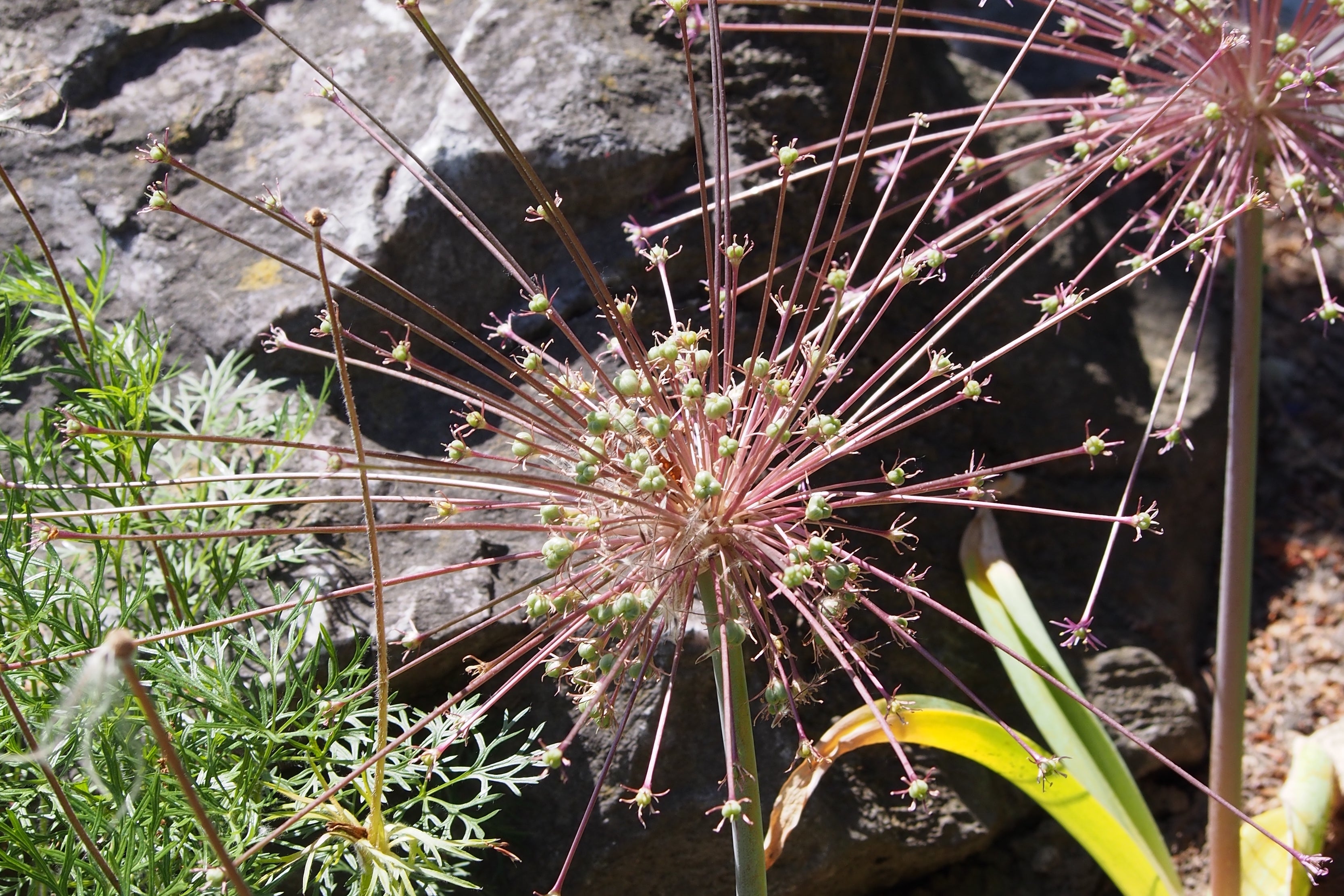Allium schubertii
Approx. 0.5 litre pot
About this cultivar:
Allium schubertii is a bulbous perennial producing bright-green, strap-shaped leaves in spring, which die back before the flowers appear. These consist of a blast (very complicated botanical term) of star-shaped, pinky-purple florets on stems of differing lengths producing a firework effect. I actually think it looks like something from outer space.
There are a whole load of outer-space plants I like and this is one of them. For those more domestically inclined, they make great dried flowers. Try in dryer areas.
Native to the eastern Mediterranean and central Asia. The specific epithet honours Gotthilf Heinrich von Schubert (1780-1860), German physician and plant collector.
A short youtube video I found below:
- Position: Full sun, partial shade (prefers full sun)
- Soil: Almost any soil, Dry soil
-
Flowers: June, July, August
- Other features: Bees and Butterflies, Suitable for Container
- Hardiness: H4 - Hardy through most of the UK (-10 to -5°C)
- Habit: Columnar or Upright
- Foliage: Deciduous
- Height: 15 - 45 cm (0.5 - 1.5 ft)
- Spread: 15 - 45 cm (0.5 - 1.5 ft)
- Time to full growth: 2 to 5 years
- Plant type: Herbaceous Perennial, Bulb
- Colour: Pink, green
- Goes well with: Osteospermum, Iris, Lavender, Artemisia, Sage, Phlomis and perhaps Rosa.
About this genus:
Allium, also known as flowering onion, are disease resistant and very easy to grow in a wide range of conditions; from coastal areas to drought-prone areas to our own clay soil at Ballyrobert. They are bulbous, often edible, herbaceous perennials with a strong onion or garlic scent that is useful for warding off vampires.Allium usually have pom-pom flowering heads that can be pink, yellow, lemon, powder-blue, purple, lilac, or white. They appear to flower for ever and insects love them. When Allium do stop flowering they don't droop-down - they dry-out! These dry flowers and stems add wonderful structure and offer an even longer 'flowering period'.
Great on their own they are also versatile plants. One use is weaving through other plants since they take up very little space on the ground and have an upright habit. We also grow a few of ours on a wall - it works! (we think). It is up to you what you do with yours! They are also great to grow in pots.
Some ideas: Try Allium next to pastels- we put the smaller ones next to Osteospermum. Or try them with Mediterranean plants like Lavender, Artemisia, Sage, Phlomis and perhaps Rosa. We also think their succulent appearance means they compliment Iris.








